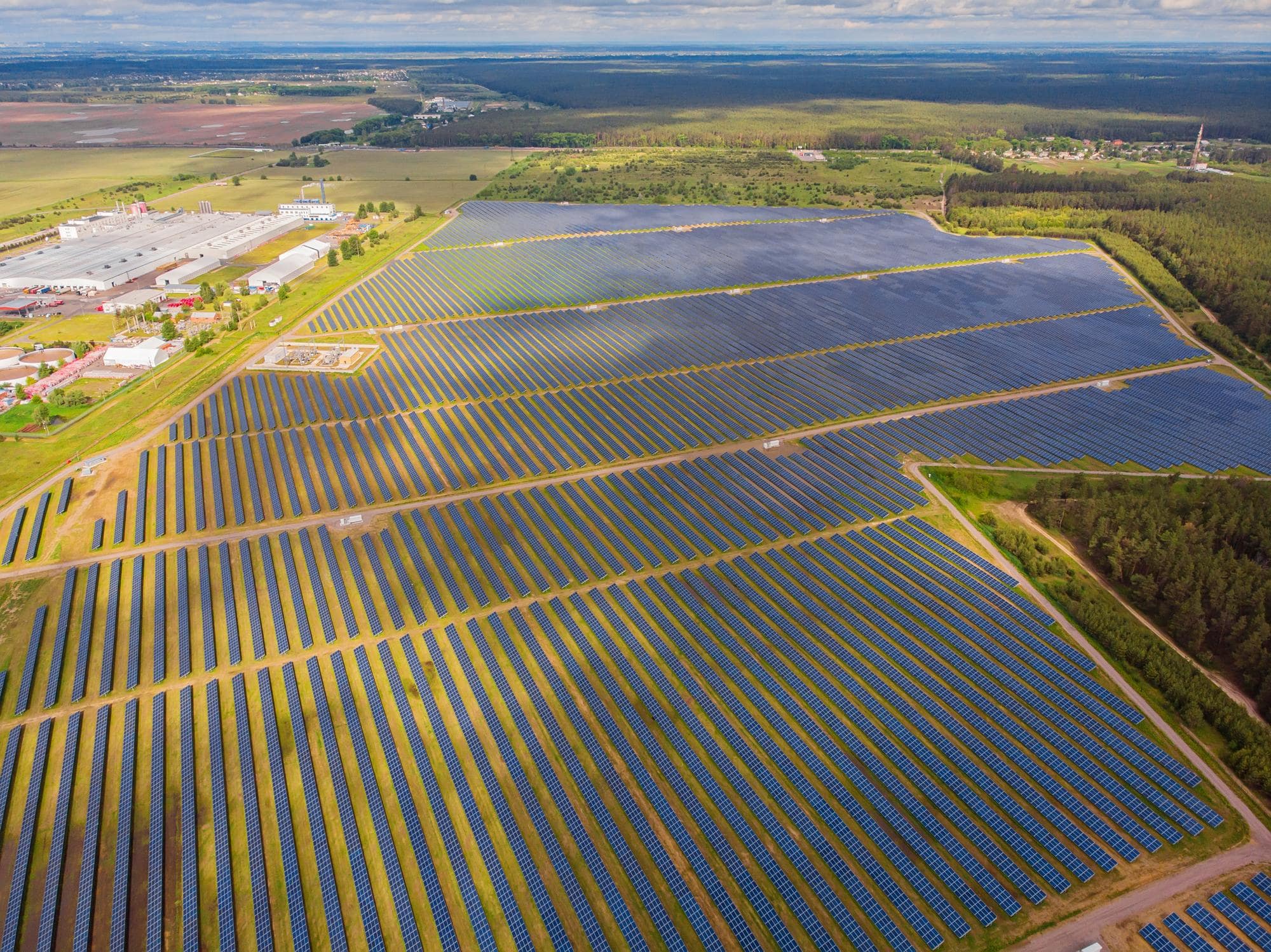Imagine a world powered by clean, renewable energy, reducing our reliance on fossil fuels and lowering greenhouse gas emissions. This vision is becoming a reality, thanks partly to solar farm installations. These large-scale installations of solar panels generate electricity for communities and cities, harnessing the abundant energy from the sun. But what exactly are solar farms, and how do they work? Let’s explore the world of solar farms and unlock their power.
Key Takeaways
- Solar farms provide clean and renewable energy with economic and environmental benefits.
- Land availability, sunlight exposure, infrastructure access, etc, influence solar farm development.
- Investing in solar farms offers a great opportunity to support clean energy initiatives while earning returns for the future of renewable energy.
Understanding Solar Farms: An Overview
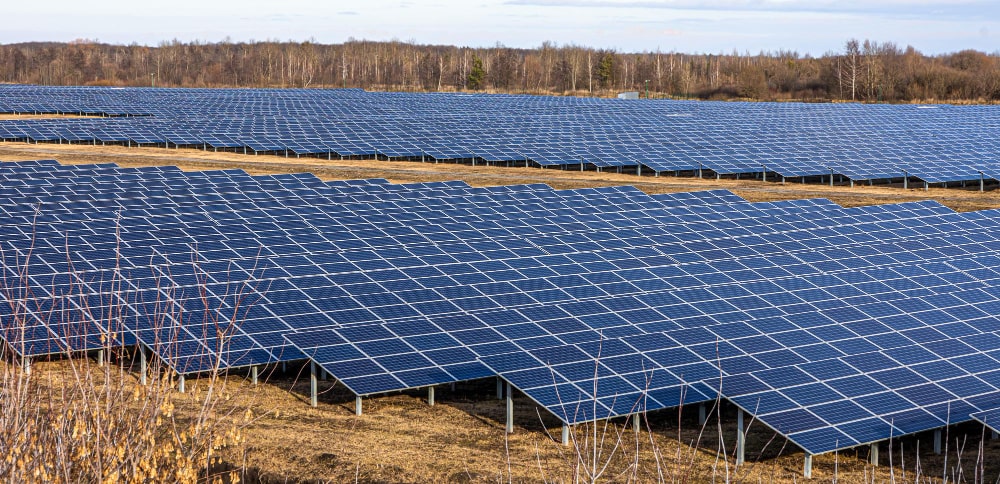
Solar farms are large-scale installations of solar panels that generate electricity, providing clean and renewable energy to communities and cities. With countries like China, India, and the United States leading the charge in solar energy production, solar farms are becoming increasingly popular worldwide. These renewable energy projects offer numerous benefits, such as lower electricity costs, creating jobs, and boosting economic growth.
Are you curious about how solar farms work and their primary components? Here are some key points to understand:
- Solar farms connect solar power directly to the National Grid’s transmission network.
- This connection allows the distribution of clean energy over extensive distances.
- Solar farms foster new opportunities for further projects to connect to the grid.
Solar farms can efficiently convert sunlight into usable electricity with the right combination of components. We’ll now explore the essential components that constitute a solar farm.
Components of a Solar Farm
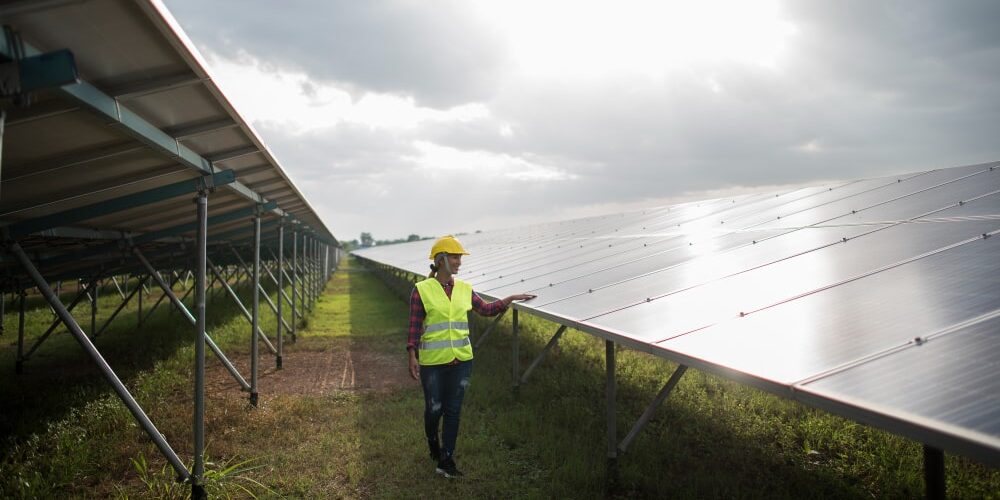
A solar farm consists of solar panels, inverters, battery storage, and grid connections to convert sunlight into usable electricity. Each component plays a crucial role in the overall efficiency and effectiveness of the solar farm.
We will now examine these components and their respective roles in more detail.
Solar Panels and Arrays
Solar panels in solar farms are made of photovoltaic cells, which absorb sunlight and convert it into electricity. These photovoltaic cells are crafted from silicon wafers created by transforming beach sand into high-grade silicon. The solar panels are arranged in arrays for maximum efficiency, and their orientation and inclination are optimized to harness the most sunlight throughout the day.
Different types of solar arrays can be used in solar farms, including fixed arrays and those that utilize solar trackers. Fixed arrays are designed to provide the best annual output profile with their calculated inclination of the solar panels. On the other hand, solar trackers, such as single-axis and dual-axis trackers, can significantly enhance the system’s overall performance by following the sun’s movement throughout the day and adjusting panel orientation accordingly.
Inverters and Battery Storage
Inverters play a vital role in the functionality of solar farms. Inverters are a key component of solar farms, transforming the direct current (DC) electricity that solar panels produce into alternating current (AC) that can be utilised in homes and businesses. Centralized inverters manage the output of large blocks of solar arrays for optimal performance, whereas string inverters are designed to maximize efficiency for individual panels. Centralized inverters condition the output of a substantial block of solar arrays for optimal performance, while string inverters offer maximum efficiency for each panel.
Battery storage systems are another essential component of solar farms, providing an efficient way to store excess energy for future use. These systems ensure a continuous power supply when sunlight is unavailable, such as during cloudy days or at night, making solar energy a more reliable and consistent energy source.
Grid Connections and Electricity Transmission
Grid connections are essential for solar farms to transmit the generated electricity to consumers. The connection to the utility grid is typically made through a high voltage, three-phase step-up transformer of 10 kV and above, offering a reliable and long-lasting power output. Different types of connections exist, depending on the voltage and location of the solar farm.
The electricity produced by solar farms is conveyed to consumers via the national grid, which serves as the electricity transmission network, facilitating the transport of clean energy over long distances and paving the way for more extensive projects to connect to the grid. Feed-in tariffs offer a guaranteed revenue stream for power producers by providing designated prices paid by utility companies for each kilowatt hour of renewable electricity produced by qualifying generators and fed into the grid.
The Benefits of Solar Farms
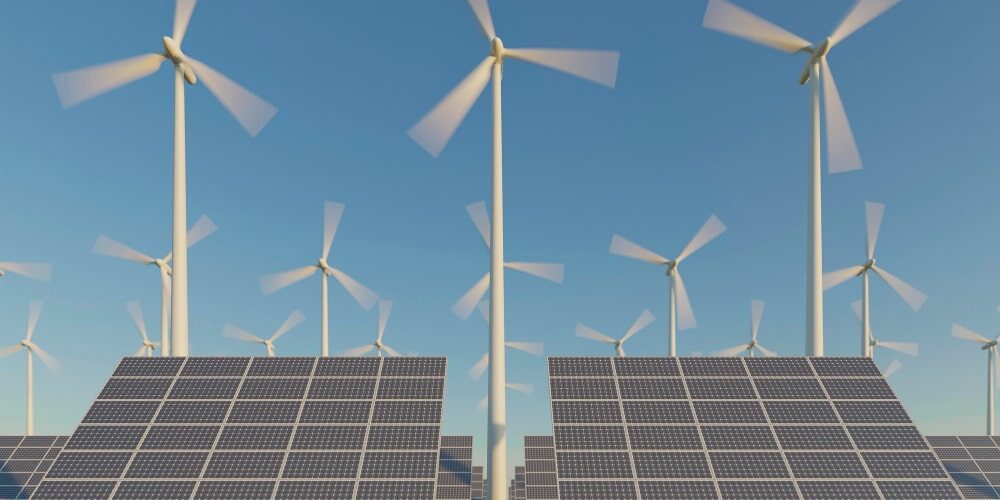
Solar farms offer numerous benefits, both environmentally and economically. Solar farms significantly reduce greenhouse gas emissions by replacing fossil fuels with clean, renewable energy. This helps combat climate change and contributes to a healthier planet for future generations.
In addition to their environmental benefits, solar farms also offer economic advantages. Some of these advantages include:
- Significantly reducing electricity costs by providing a reliable and renewable energy source
- Contributing to heightened energy independence by offering a local source of renewable energy
- Reducing reliance on imported fossil fuels and promoting a more sustainable energy future
Types of Solar Farms
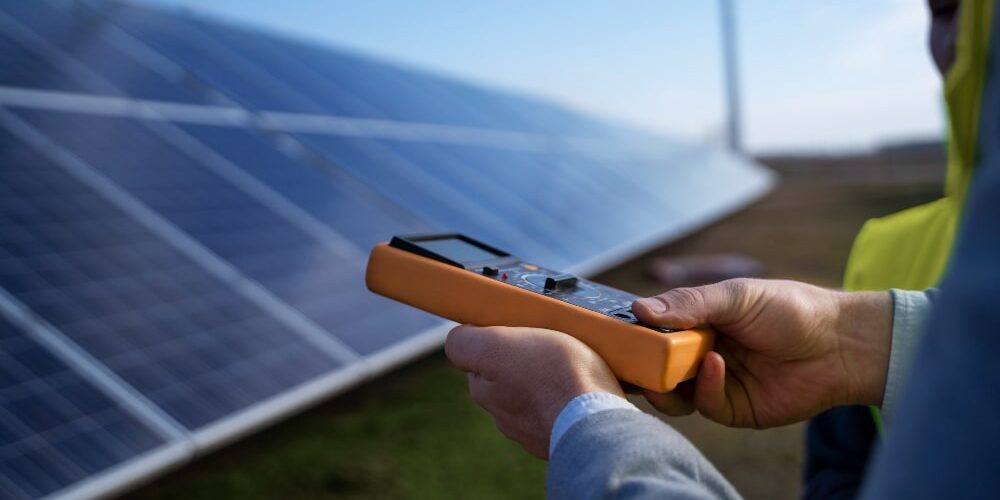
Solar farms can be categorized into various types, offering unique benefits and opportunities. Community solar farms serve smaller communities and offer an opportunity for residents to access the benefits of solar panels without the need to invest in them. The Reach Community Solar Farm in Cambridgeshire, UK, is an excellent example of a community solar farm. Such farms are ideally suited for providing solar power to communities.
Large-scale solar farms, or utility-scale solar farms, provide power to entire cities or regions. These massive installations contribute to a significant combined capacity of solar power generation. Examples of large-scale solar farms include the Benban Solar Park, which ingeniously tilts to face the sun throughout the day.
Factors Affecting Solar Farm Development
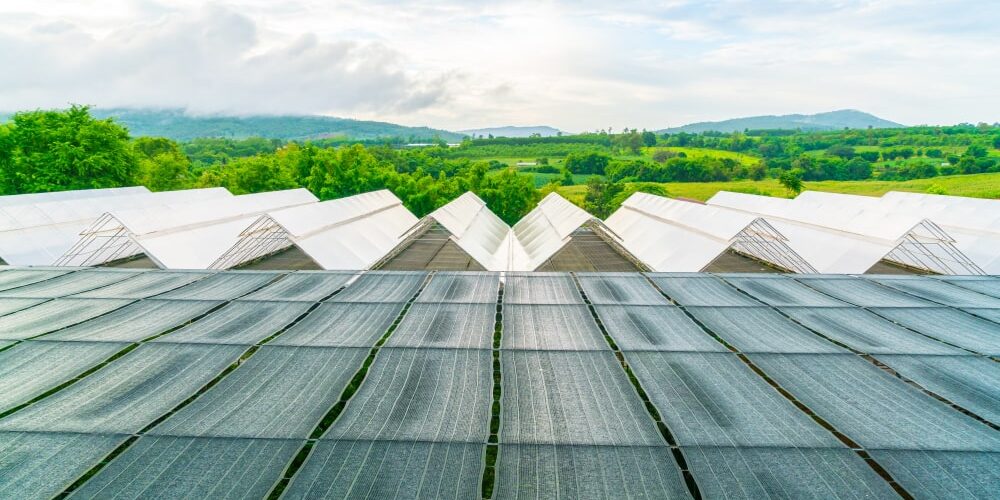
Various factors influence solar farm development, such as land availability, sunlight exposure, infrastructure access, and local regulations. Optimal locations for solar parks are typically brownfield sites or areas with no other beneficial land use. Additionally, deploying solar arrays on agricultural land can increase the economic value of farms deploying agrivoltaic systems instead of conventional agriculture.
Other factors that affect solar farm development include solar panel orientation, pitch, and the type of solar panels used. These factors contribute to the overall efficiency and performance of the solar farm, ensuring that the installation generates the maximum amount of electricity possible from the available sunlight.
Solar Farms Around the World
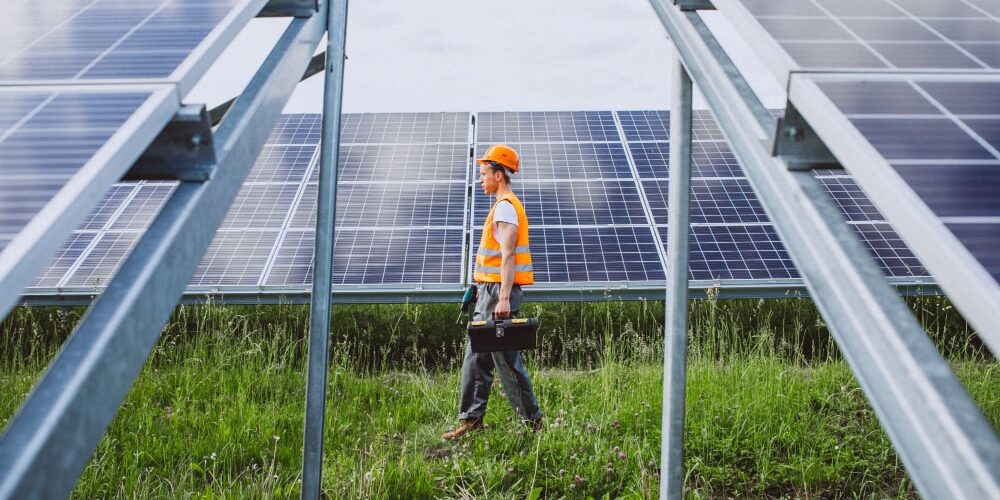
Solar farms are gaining popularity worldwide, with countries like China, India, and the United States leading in solar energy production. This universal pledge to solar energy accelerates progress in technology and infrastructure, rendering solar power a progressively feasible solution to meet the world’s energy demands.
The United States is home to some of the world’s largest solar farms, such as the Solar Star project in California, which boasts a capacity of 579 megawatts. China, the global leader in utility-scale solar capacity, has numerous massive solar farms, including the Tengger Desert Solar Park, which covers an area of over 43 square kilometres.
India is also making significant progress in solar energy, with the Kamuthi Solar Power Project, capable of generating 648 megawatts of clean energy.
Investing in Solar Farms: Opportunities and Challenges
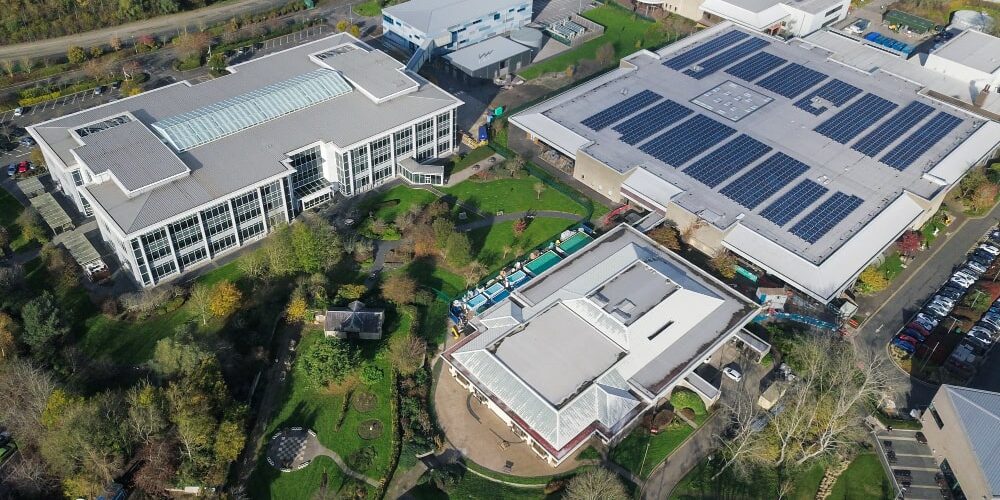
Investing in solar farms presents an opportunity for businesses and individuals to support clean energy initiatives while earning returns on their investments. Some benefits of investing in solar farms include:
- Supporting clean energy and reducing carbon emissions
- Generating long-term income potential
- Providing a steady revenue stream for investors
- Contributing to the growth of the renewable energy industry
By investing in solar farms, you can make a positive impact on the environment while also benefiting financially.
Nevertheless, investments in solar farms entail specific challenges, including volatile energy prices and regulation shifts. Potential investors need to weigh these risks against the prospective returns on investment meticulously.
Despite these challenges, the growing global commitment to renewable energy and advancements in solar technology make solar farms an attractive investment opportunity for those willing to embrace the potential of clean energy.
The Future of Solar Farms and Renewable Energy
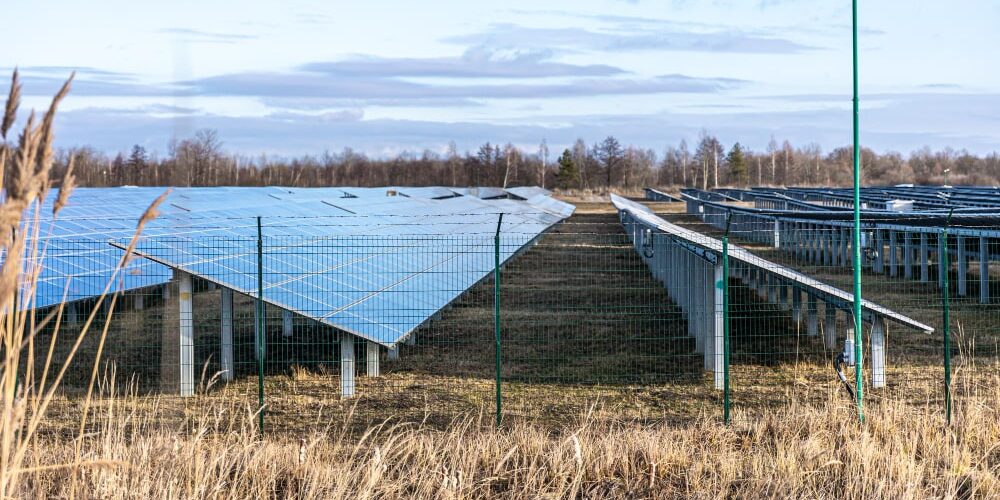
The outlook for solar farms and renewable energy is optimistic, as technological progress fosters more efficient and cost-effective solar power generation. Governments worldwide are increasingly committing to reducing carbon emissions and promoting renewable energy, driving further investment and development of solar farms. The UK government has set a goal to increase the solar power generating capacity from 14 gigawatts (GW) to 70GW by 2035. This will represent a fivefold increase to the current level.
As solar technology advances, we can expect solar farms to play an even more significant role in the global energy landscape. By harnessing the power of the sun, solar farms have the potential to revolutionize the way we generate and consume electricity, paving the way for a cleaner and more sustainable future.
Biggest UK Solar Farms
The UK is home to several large solar farms that contribute to the country’s renewable energy efforts. Shotwick Solar Park, located near Chester, is the UK’s largest solar farm, with an impressive capacity of 72.2 megawatts. It generates enough electricity to power over 18,000 homes each year.
Lyneham Solar Farm is a noteworthy solar farm located in the UK. It was developed with the British Ministry of Defence (MOD). This impressive solar installation in Bradenstoke, Wiltshire, is part of the MOD’s commitment to renewable energy.
Owl’s Hatch Solar Park in Herne Bay, Kent, is another remarkable solar farm, generating clean energy and reducing the UK’s reliance on fossil fuels.
Summary
Solar farms are integral to the global shift towards clean, renewable energy. By harnessing the sun’s power, these large-scale installations generate electricity, reduce greenhouse gas emissions, and promote energy independence. With technological advancements and increasing global commitment to reducing carbon emissions, the future of solar farms and renewable energy is bright. Now is the time to embrace the potential of solar power and work towards a cleaner, more sustainable future.
Frequently Asked Questions
Are solar farms profitable in the UK?
Yes, solar farms are a profitable venture in the UK. With an average return on investment of 10 to 20%, they offer an attractive option for renewable energy production.
How much does building a 1-acre solar farm in the UK cost?
Buying land and panels to build a 1-acre solar farm in the UK can cost up to £387,500, making it a considerable investment.
Are there any solar farms in the UK?
Yes, there are solar farms in the UK, as evidenced by the recently commissioned 50MW farm near Gwent.
What are the problems of solar farms in the UK?
Solar farms in the UK can have a detrimental effect on the environment, by reducing nearby property values and potentially obstructing neighbouring land’s agricultural potential. However, with careful planning, it is possible to still reap the benefits of solar energy without compromising the well-being of local wildlife or communities.
What are the main components of a solar farm?
Solar farms provide clean, renewable energy using solar panels, inverters, battery storage, and grid connections.
